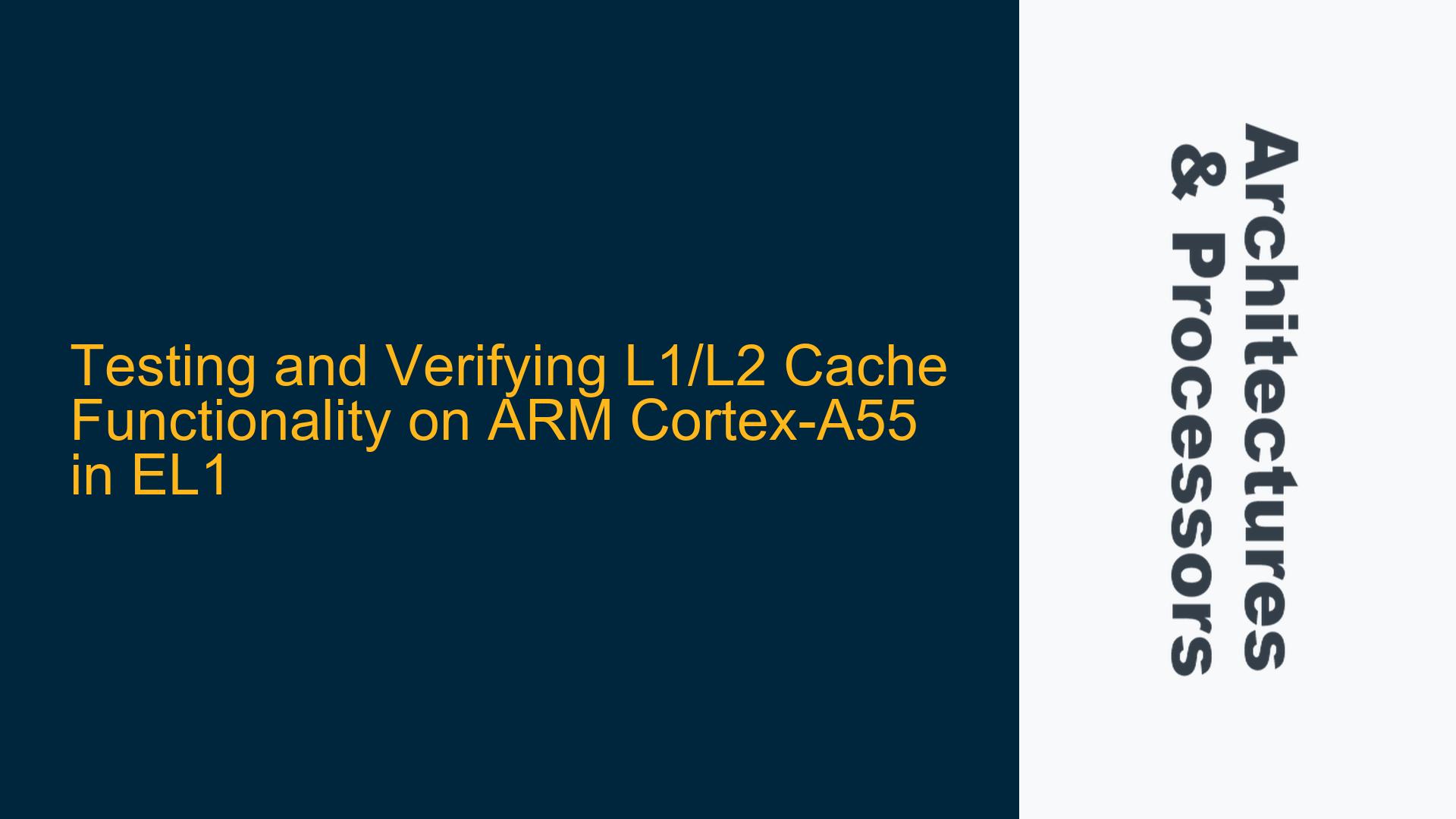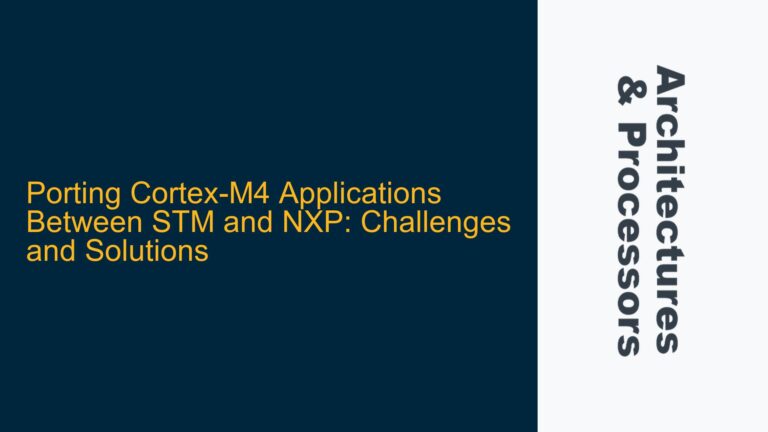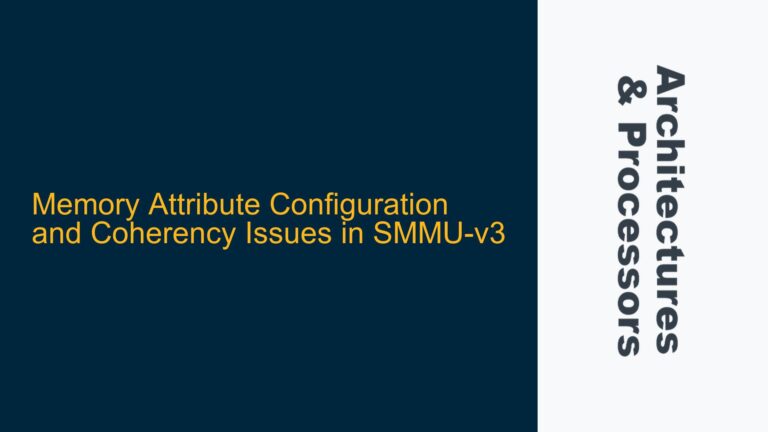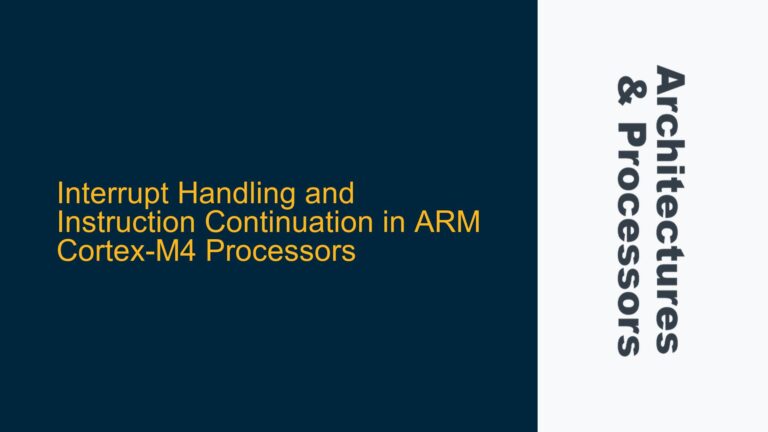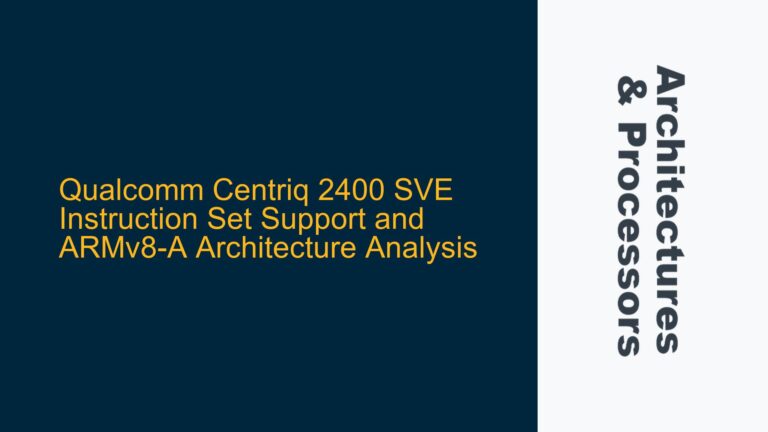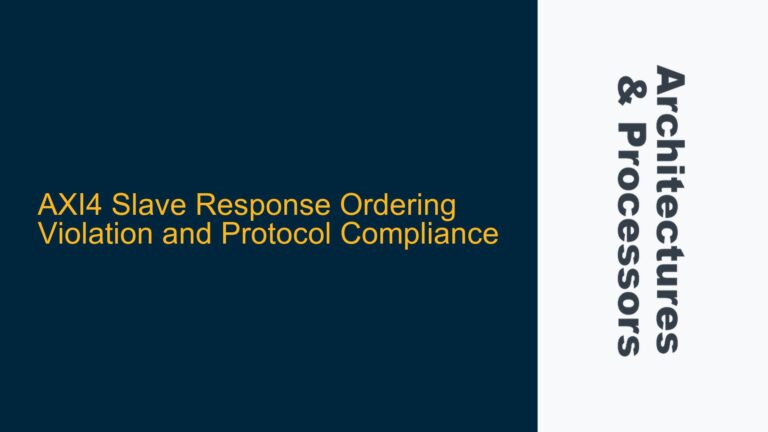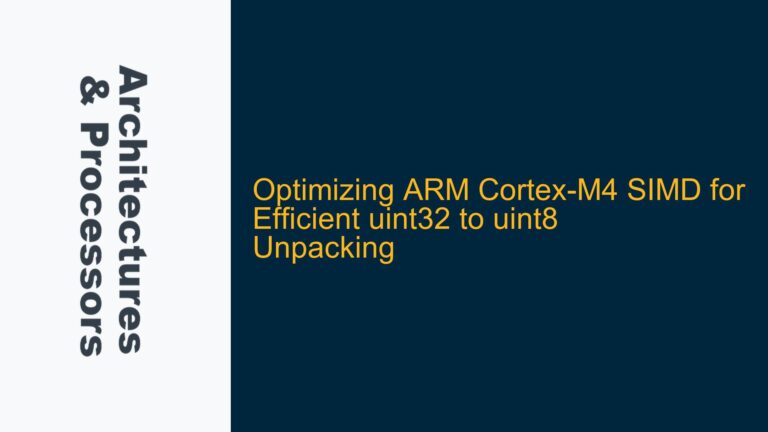ARM Cortex-A55 Cache Verification Challenges in EL1
The ARM Cortex-A55 processor, like many modern ARM cores, features a hierarchical cache architecture with separate L1 instruction and data caches, as well as a unified L2 cache. While the ARM architecture provides mechanisms to access and manage caches at higher exception levels (EL3), performing direct cache testing and verification in lower exception levels such as EL1 presents significant challenges. This is primarily due to the restricted access to cache control registers and the inherent complexity of cache behavior in multi-core systems.
In EL1, the operating system or application software does not have direct access to cache control registers such as the Cache Size Identification Register (CCSIDR) or the Cache Maintenance Operations (CMO) that are available in EL3. This limitation makes it difficult to perform low-level cache testing, such as writing specific patterns to cache lines and verifying their integrity. Additionally, the L2 cache, being shared across multiple cores, introduces further complexity due to potential coherency issues and the need for synchronization between cores.
The primary goal of cache verification is to ensure that the cache memory is functioning correctly by writing known patterns (e.g., all zeros or all ones) to cache lines and reading them back to confirm data integrity. This process is straightforward in traditional memory testing but becomes complicated in caches due to their transient nature, eviction policies, and the need to maintain coherency with main memory.
Cache Testing Limitations and Indirect Measurement Techniques
Given the restrictions in EL1, direct cache testing is not feasible. However, indirect methods can be employed to infer cache behavior and verify its functionality. One such method involves measuring access times for memory regions of varying sizes. By analyzing the timing differences, it is possible to infer the presence and approximate size of the L1 and L2 caches.
For example, when accessing a small memory region that fits entirely within the L1 cache, the access time will be significantly faster compared to accessing a larger region that exceeds the L1 cache size and spills into the L2 cache or main memory. This approach, while not providing direct verification of cache integrity, offers a practical way to validate cache functionality in EL1.
Another indirect method involves using performance counters available in the Cortex-A55. These counters can be configured to monitor cache hits and misses, providing insights into cache behavior. By running specific workloads and analyzing the performance counter data, it is possible to infer whether the cache is functioning as expected.
However, these indirect methods have limitations. They do not provide direct verification of cache memory integrity and are susceptible to variations caused by other system activities, such as interrupts or background processes. Therefore, while useful for performance analysis, they are not sufficient for comprehensive cache verification.
Implementing Cache Verification in EL1 Using Custom Workloads and Performance Counters
To perform cache verification in EL1, a combination of custom workloads and performance counters can be employed. The following steps outline a detailed approach to achieve this:
-
Workload Design: Develop a custom workload that accesses memory regions of varying sizes. The workload should be designed to stress the cache hierarchy, ensuring that data is loaded into the L1 and L2 caches. For example, a workload could involve iterating over arrays of different sizes and performing read/write operations.
-
Performance Counter Configuration: Configure the Cortex-A55 performance counters to monitor cache-related events, such as L1 data cache hits, L1 data cache misses, L2 cache hits, and L2 cache misses. This configuration can be done using the Performance Monitor Unit (PMU) registers, which are accessible in EL1.
-
Timing Analysis: Execute the custom workload and measure the access times for different memory regions. Use high-resolution timers to capture the timing data. Analyze the timing differences to infer cache behavior. For example, a sudden increase in access time when the memory region size exceeds the L1 cache size indicates that data is being fetched from the L2 cache or main memory.
-
Pattern Verification: While direct pattern verification is not possible in EL1, indirect verification can be achieved by comparing the results of repeated memory accesses. For example, write a known pattern to a memory region, read it back, and compare the results. Repeat this process multiple times to ensure consistency. Any discrepancies could indicate cache or memory issues.
-
Cross-Core Synchronization: In multi-core systems, ensure that cache coherency is maintained by using appropriate synchronization mechanisms, such as memory barriers or cache maintenance operations (if available). This step is crucial to avoid inconsistencies caused by cache coherency issues.
-
Performance Counter Analysis: After executing the workload, analyze the performance counter data to verify that the cache behavior aligns with expectations. For example, a high number of L1 cache hits and a low number of L2 cache misses would indicate that the cache is functioning correctly.
-
Validation and Reporting: Compile the results of the timing analysis, pattern verification, and performance counter analysis into a comprehensive report. This report should highlight any anomalies or discrepancies that could indicate cache issues.
By following these steps, it is possible to perform a thorough verification of the L1 and L2 caches in EL1, despite the limitations imposed by the ARM architecture. While this approach does not provide the same level of direct verification as EL3, it offers a practical and effective method for ensuring cache functionality in lower exception levels.
Conclusion
Verifying the functionality of L1 and L2 caches on the ARM Cortex-A55 in EL1 is a complex task due to the restricted access to cache control registers and the inherent complexity of cache behavior in multi-core systems. However, by employing indirect measurement techniques, custom workloads, and performance counters, it is possible to infer cache behavior and verify its functionality. This approach, while not as comprehensive as direct verification in EL3, provides a practical solution for cache testing in lower exception levels. By carefully designing workloads, configuring performance counters, and analyzing timing and performance data, developers can ensure that the cache hierarchy is functioning correctly and reliably in their embedded systems.
